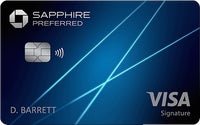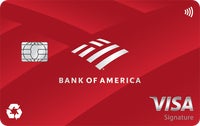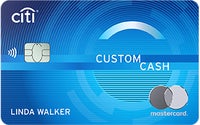How a new credit card can fight inflation




Key takeaways
- The ongoing impact of inflation in recent years has left many Americans tightening their wallets.
- One surprising solution for combating the negative impacts of high prices may be opening a new credit card that allows you to offset higher costs with cash back savings and other rewards.
- But while welcome bonuses, rewards and miles can all help take the sting out of spending, it’s important to use these cards responsibly and limit the balance you carry.
Recent inflation has left many Americans paying more at the gas pump, the grocery store and other places they’d rather not. And while this isn’t great news, Americans have weathered these storms before. From coupon clipping to discount shopping, we know there are ways to soften the blow of high prices.
By using your credit cards strategically, you may be able to earn discounts in common spending categories where prices are rising. Plus, a new credit card that fits your spending patterns — especially one offering hefty rewards and an attractive interest rate — could be another useful weapon in the fight against higher costs.
Here are tips on how you can use your credit card — especially a new one — to fight inflation no matter its level.
The impact of inflation on credit card debt
After rising for more than a year, the Consumer Price Index (CPI) — one of the most widely used measures of inflation, which takes into account consumer prices for everything from groceries to gas — peaked at 9.1% in June 2022, according to the U.S. Bureau of Labor Statistics. Although this rate has since fallen to 3.0% as of September 2025, it’s still slightly higher than the 2% inflation rate typically targeted by the Federal Reserve.
Translation: In the past few years, Americans’ purchasing power has eroded, meaning it takes more of our money to buy goods and services.
In an effort to curb inflation, the Federal Reserve maintained the target federal funds rate to a range of 5.25% to 5.50% for a long stretch. When the Fed bumps up that rate, that action tends to trickle down to interest rates for credit cards. How? If the federal funds rate climbs, then the prime rate climbs and the interest rates for credit cards are likely to climb as well.
In September 2024, however, the Fed finally began cutting interest rates, starting with a half percentage point, for a new target range of 4.75% to 5.00% — a signal that the Fed felt good about where inflation was going. In December 2025, the Fed issued its latest quarter-point cut, targeting a range of 3.50% to 3.75% — the lowest since late 2022. But even with falling rates, credit card debt is still expensive debt.
As of December 2025, the average credit card interest rate stands at just under 20%, according to Bankrate data. This increase — up from an average of 16.17% in 2022 — is making it more expensive for many consumers to carry a balance on their credit cards.
Unfortunately, even though there has been progress in the Federal Reserve’s fight to lower inflation — the Federal Reserve’s interest rate cuts are proof of that — Americans may not see immediate relief. That’s because the higher prices driven by past inflation continue to diminish individuals’ ability to save. A credit card can help bridge that gap and put money back into your pocket.
How the right card can lessen the sting of high prices
Just as inflation nibbles away at the spending power of cash, it also can nibble away at the spending power of credit cards. However, a credit card with robust rewards, bonuses and benefits can help you offset inflation and higher prices. Here’s how:
It can provide lucrative rewards
Credit card rewards can save you money on your everyday spending, especially if the rewards come in the form of cash back. You could get anywhere from 1% to 5% back or more, depending on what you’re buying and what card you have. If you have a travel credit card that earns points or miles, you could stretch your savings even further by having your rewards offset some of the costs of an upcoming trip.
On top of that, the sign-up bonus you receive when opening a new rewards card can help cushion the blow of rising prices, especially if you’re planning a large purchase.
Keep in mind: These rewards will only offset the costs of inflation if you don’t carry a balance on your card. If you do, you’ll be charged interest, which will likely cancel out the value of any rewards you earn.
It can help you save on essentials like gas and groceries
The cost of food increased an average of 3.1% from September 2024 to September 2025, according to data from the U.S. Bureau of Labor Statistics, while electricity and home gas service prices appear to have increased by 6.4% for the same time frame.
Consumers are clearly still facing high costs on essentials. The average family of four with two adults and two kids ages eight and 10 is now spending $1,351 per month on a moderate food spending plan, according to September 2025 data from the U.S. Department of Agriculture.
The good news is that credit cards can help you out. Plenty of cards offer rewards on groceries and food delivery, dining out, gas at the pump and other common spending categories.
In some cases, you can find a credit card that covers multiple categories — such as a flat-rate cash back card that rewards you with the same rate of cash back on all spending. No matter which credit card you choose, you’re able to earn rewards on the food and fuel spending you would’ve done anyway.
What to consider when picking a credit card
If you’re considering credit cards that deliver high-price-fighting rewards, take these factors into consideration before deciding:
- Your overall spending patterns: Examine your spending over the past few months so you can find a card that rewards your everyday expenses.
- What kinds of rewards you want to earn: You may benefit from a credit card that provides an attractive amount of cash back on grocery purchases. Or maybe you’re traveling a lot now and would find an airline or hotel credit card that earns points or miles more rewarding.
- How easy it is to earn the card’s welcome bonus: A welcome bonus can offset your spending, but not if you’re going to go into debt to reach the minimum spending requirement. Find a card with a welcome bonus that will easily fit into your budget.
- What interest rate you’re comfortable with: Many rewards credit cards extend a 0% intro APR for at least 12 months to further maximize their value, although the best 0% APR cards can offer up to 21 months — but it’s the regular variable APR that you really need to pay attention to. There may come a time when you have to carry a balance on your card, so choosing one with an APR that’s lower than average could save you some serious dough when it comes to long-term charges.
Bankrate’s top choices for fighting inflation with credit card rewards

Blue Cash Preferred® Card from American Express

Chase Sapphire Preferred® Card

Bank of America® Customized Cash Rewards credit card

Citi Custom Cash® Card

Costco Anywhere Visa® Card by Citi
Other money-saving strategies
Here are some additional tips that could help you stretch your savings further:
- Consider a rotating bonus category card: If you aren’t particularly sold on any of the cards above, you might be interested in a rotating bonus category card like the Discover it® Cash Back, which offers 5% cash back on activated rotating bonus categories each quarter (on up to $1,500 in spending per quarter, then 1%). At a cash back rate of 5%, this card can definitely help you against inflation on category purchases.
- Double dip with cash back apps: You’ll find a number of cash back apps you can use to deepen your grocery and gas discounts. Ibotta and Fetch Rewards are just two that allow you to save money on groceries while still earning credit card rewards on those purchases. For gas, there’s the app Upside, as well as plenty of loyalty programs to help you save at the pump while still earning credit card rewards on your fuel spending.
- Put together a solid budget: Setting up a spending plan doesn’t always require you to cut something out. You may be able to move expenses around or find ways to earn extra money to make up for the shortfall. The point is to take stock of your spending and figure out what you can change to fare better even as prices rise.
- Avoid credit card interest at all costs: You won’t benefit from rewards if you’re carrying a balance on your card from month to month, so you should only try out the rewards strategies on this list if you can pay your balance in full every billing cycle. If you have credit card debt to consolidate, consider transferring your high-interest debt to a card that offers 0% interest for a limited time.
The bottom line
Past inflation has triggered higher prices for everything from milk to Maseratis. As Americans continue to cope with the impacts of inflation (even as inflation itself slows), some are finding that a new credit card — particularly one that offers lucrative rewards and a welcome bonus — can help.
But before you start shopping for the best rewards credit card to add to your inflation-fighting arsenal, consider whether cash back, points or miles will bring the most bang for your buck. Also, strive to pay off your card in full so credit card interest charges don’t cancel out the value of your rewards in the fight against high prices.
*Information about the Citi Custom Cash® Card, Costco Anywhere Visa® Card by Citi and Sam’s Club® Mastercard® has been collected independently by Bankrate. The card details have not been approved or reviewed by the issuer.
The Bank of America content in this post was last updated on Dec. 10, 2025.
Why we ask for feedback Your feedback helps us improve our content and services. It takes less than a minute to complete.
Your responses are anonymous and will only be used for improving our website.





